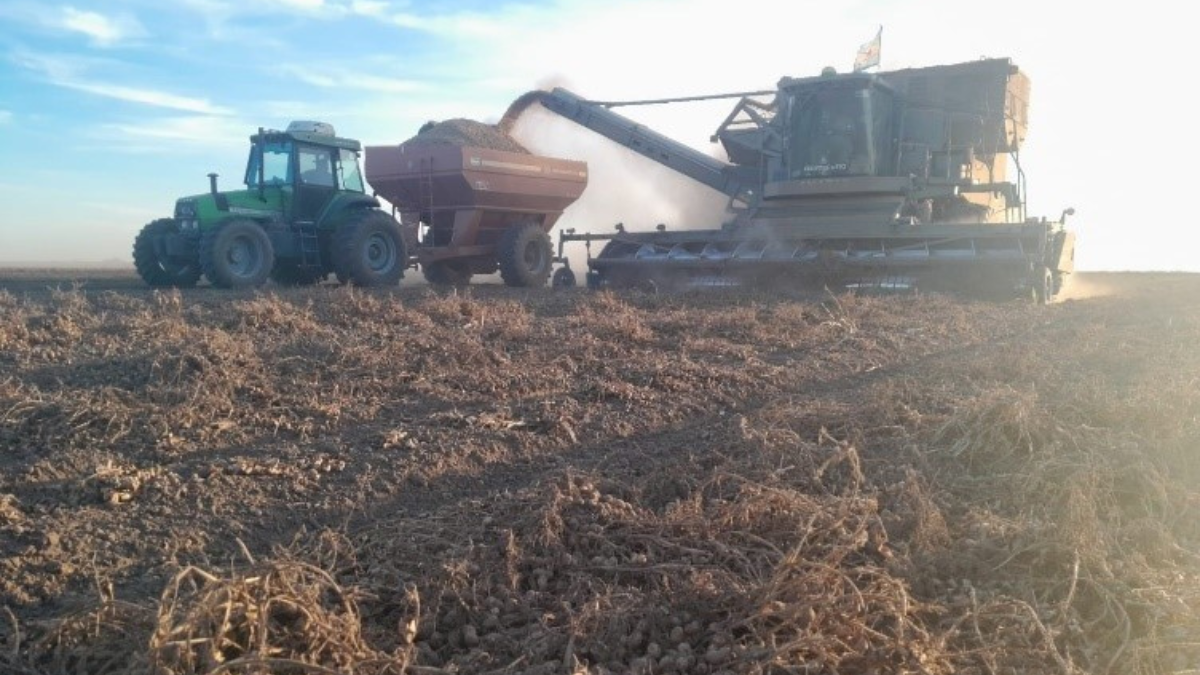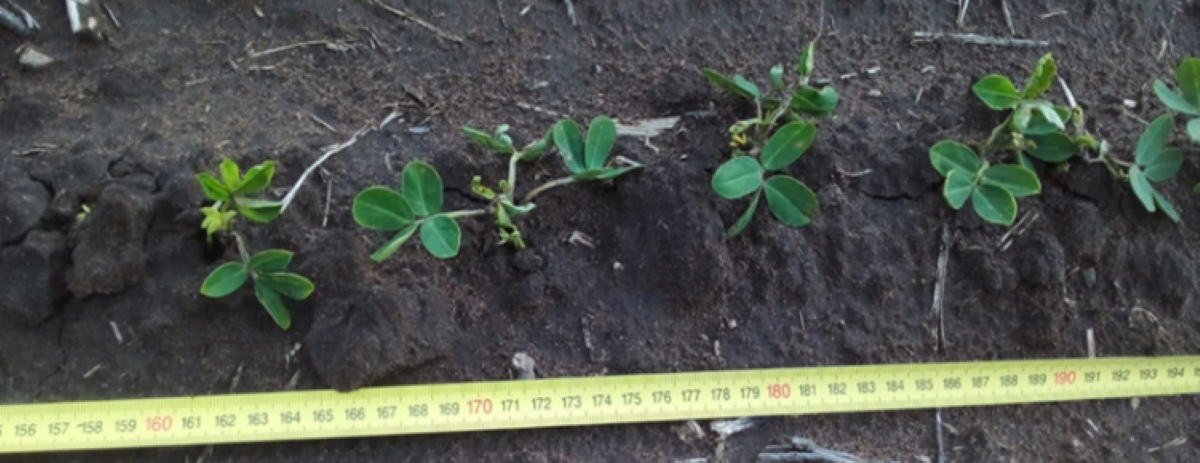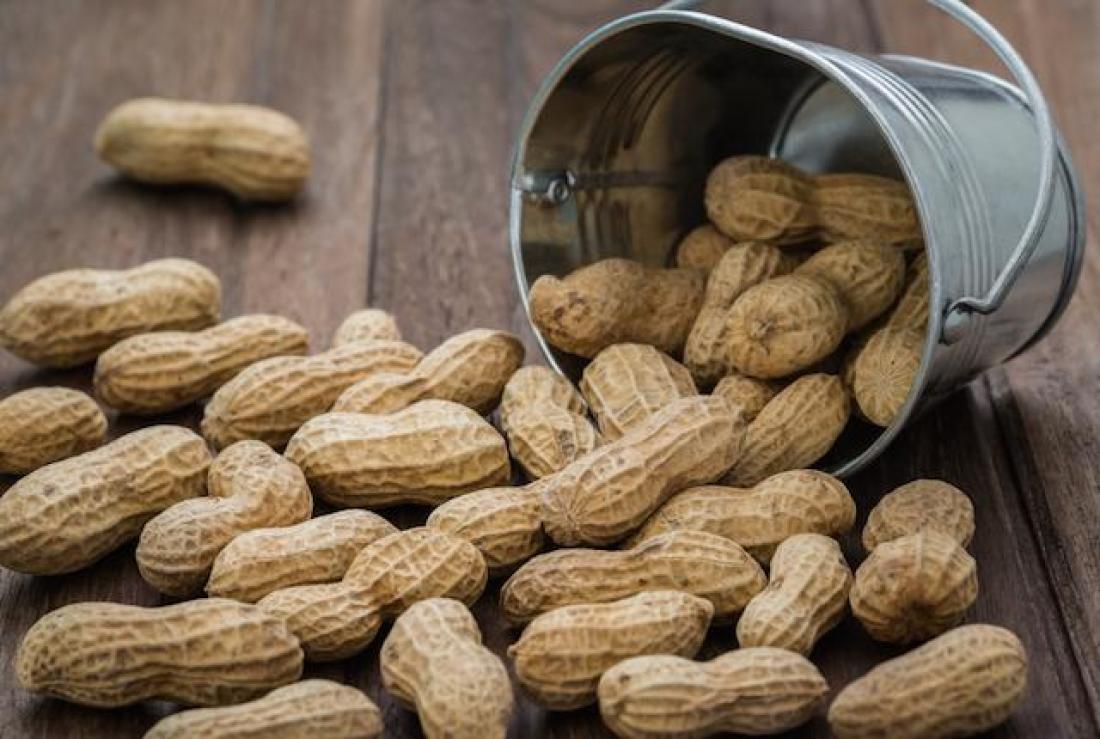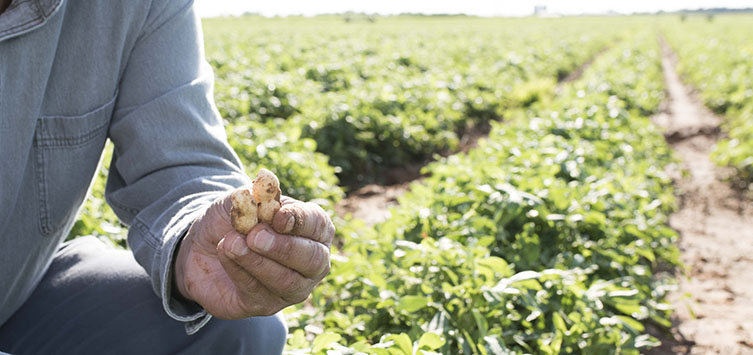Overview
The current situation of peanuts differs according to the geographical area in which they are located. The Southern and part of the Westersn areas show acceptable partial results, due to the rains that accompanied during the development stage and the water reserves located in the underground layers, which compensated the lack of rainfall. On the other hand, the Central and the Northern areas are the ones that suffered the most from the drought, which is why we expect that the greatest losses in yields and quality will be concentrated in these areas.

Image 1: Digging tasks – Central Area.
Nowadays, quantifying losses, probable yields and final quality is difficult because the progress in the harvesting activities is very low. In years characterized by droughts, the estimates become more complicated since the situation is variable, even in different lots located within the same field. It is worth making a special comment about the presence of aflatoxins, which could represent a great challenge for the Argentinean origin this year.
Regarding the meteorological developments, the last week has passed with moderate and high intensity rainfall. Harvesting tasks are interrupted, although the situation is not critical at the moment. Forecasts announce a few more days of high humidity conditions, so we plan to resume harvesting activities as soon as the weather conditions improve.
As of today, the progress of digging is estimated at 79%, whereas the progress of harvesting is estimated at 4%.
Map of the Main Peanut-growing Area in Argentina
The main peanut-growing area in Argentina includes the provinces of Cordoba, La Pampa, San Luis and Buenos Aires. Overall, it may be defined as follows:

Image 2: Division of the main peanut-growing area in Argentina.
Rainfall Distribution and Temperature Records
April passed leaving rainfall of variable intensity in all the peanut areas, reaching records of between 30 and 190 millimeters, depending on the region. The Central and Southern areas were the most affected by the precipitations, which decreased towards the north and west of the Cordoba province. Meanwhile, towards the west of San Luis, minor rainfall was recorded.

Image 3: Accumulated rainfall in Cordoba – April 2018.
With regard to thermal records, minimum temperatures were established between 15 and 18 °C, while the maximum temperatures climbed above 28 °C. According to reports from the National Meteorological Service (SMN), April 2018 was the warmest April of the last 60 years.

Image 4: Maximum Average Monthly Temperature (°C) in the Province of Cordoba – April 2018.

Image 5: Minimum Average Monthly Temperature (°C) in the Province of Cordoba – April 2018.

Image 6: Average monthly temperatures (°C) in the Province of Cordoba – April 2018.
IMPORTANT: Please notice that some email suppliers such as Gmail may clip this report due to its internal algorithm. In order to see the entire report, please click «View Entire Message» on the bottom left corner.

On the other hand, there was an entry of a cold front on April 19, which made the minimum temperatures descend abruptly, producing frosts in different locations, being the north of La Pampa, south of Cordoba and the northeast of Buenos Aires, the most affected areas. This climatic phenomenon meant the end of the cycle for those fields reached by the frost, intensifying the tasks of inverted-digging.

Image 7: Field affected by frost on April 19.
Progress on Digging and Harvesting Tasks
The digging tasks achieved a considerable development, reaching 79% of the total planted area. This progress represents a great improvement compared to the previous season, since, on the same date last year, only 49% had been reached, due to the floods.

Image 8: Digging progress thru May 7.
The following video shows how digging tasks are carried out in the fields.
http://https://www.youtube.com/watch?v=XNXhM0no0-o
Digging in General Deheza, Cordoba.
As for the harvesting activities, the progress was slow because the peanut plants are green due to the lack of sunny days. In these conditions, combines cannot separate the shells from the plants. Today, the progress of harvesting does not exceed 4% of the total planted area.

Image 9: Harvesting progress thru May 7.
The rains received in the last week, which are still ongoing, have suspended all harvesting activities in the different regions, until the weather conditions improve. This is expected to happen on May 11.

Image 10: Forecast in the Juarez Celman Department (Cordoba), May 7 thru May 14.
Source: www.weather.com
Agricultural Condition
With regard to the production in the fields, the expectation of obtaining high yields has gradually decreased, as the drought deepened throughout February and March. Many pods aborted the grain or did not form it directly.
Having discounted the losses in terms of quantity, the biggest concern for the peanut sector today is the quality of the peanuts, either because of the greater number of foreign bodies received with the farmer stock (the farmer tries not to lose grains by regulating the combine to «load» everything), or because of the physical damage (due to the last two wet weeks) and the higher probability of aflatoxin development (due to the severe drought).
The first inshell peanut trucks that were received at the plants show a higher percentage of aflatoxin detections in relation to recent years, although it is still too early to determine the final magnitude of this phenomenon. The amount of raw material received so far is limited and most comes from fields that present the greatest agronomic problems.
Regarding the distribution of the size of the peanut kernels, we have detected a greater presence of large grains than expected, taking into account that drought conditions have hindered ripening. However, it is too early to confirm that the detected trend is sustainable in the long term.

Image 11: General Deheza (Cordoba) – Central Area.
Within the most affected areas in terms of quality and low yields, we find the province of Cordoba, being the department Juarez Celman the most compromised, followed by the departments of Rio Cuarto and Tercero Arriba. Today, our yield estimate indicates an approximate reduction of 20% in relation to our estimation at the beginning of February. It is worth considering that this value is not definitive and could be adjusted upon time, since the harvested area is still minimal.
At this stage of the season, the plants have already completed their productive cycle, given that their phenological stage is centered on R8 (harvest maturity), thus their water consumption is zero. Moreover, the days are shorter and with fewer hours of light, so their cycles of filling and loading can be considered as finished. Therefore, we understand that it is imperative to finish with the digging tasks as soon as possible. If delays are incurred, yield losses may be higher.
As a result of the aforementioned considerations, and according to our lot surveys, today we estimate an average yield of 2.4 tons/ha (clean and dry inshell peanut basis).

Image 12: Weighted average peanut yield as of April 26 (last estimation by the Gastaldi agronomists).
Crop-related tasks and Agronomic Challenges
In the Central and Southern areas, farmers and contractors are passing the grid in those lots whose peanuts are stuck to the ground, due to heavy rains suffered in short periods of time. The function of this device is to aerate the rows, reducing the moisture of the peanuts and separating the peanuts from the ground. The results are achieved immediately, as inshell peanuts reduce between 2 and 3 percentage points of moisture in 48 hours.
From now on, it is important to have sunny and windy weather conditions in order to speed up harvesting tasks.

Image 13: Amejeira (Buenos Aires) – Souhtern Area.
Final Comments
There is no doubt that this is a difficult year for the Argentine peanut sector.
The next few weeks will be key to defining the final results of the Crop 2018 in Argentina, both in terms of yields and quality.
Today we are faced with a highly uncertain scenario, which hinders the commercial decision-making process. Only the constant progress of harvesting tasks will reveal the final results and, consequently, the final offer from Argentina to the exports market. Considering all the developments, we are sure that exports will decrease compared to last year; the real challenge lies in determining the magnitude of the reduction.

Image 14: Overview of the digging tasks in the Central Area.

























